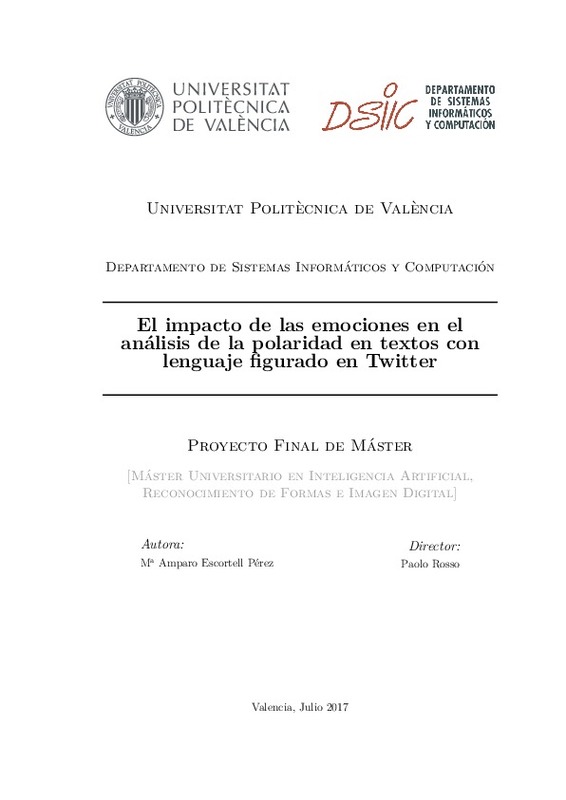|
Resumen:
|
[EN]
During the recent years we have seen how the rise of Web 2.0 and social media have
caused users to take more and more prominence on the Internet, being a source of
information generation that increases day by day. ...[+]
[EN]
During the recent years we have seen how the rise of Web 2.0 and social media have
caused users to take more and more prominence on the Internet, being a source of
information generation that increases day by day. Focusing on the social network
Twitter, one of the most complex challenges facing Natural Language Processing
is to determine the polarity of a tweet (positive, negative or neutral) when in it
appears figurative language.
This work presents an exhaustive study about the capacity of different lexical resources
of emotions to analyze the polarity of a set of data extracted from Twitter,
detailing the impact of each one of the resources about different forms of figurative
language such as irony and sarcasm we found profusely in this corpus.
We start from the hypothesis that not all the available resources favor the detection
of polarity with an equal measure, therefore we carry out a series of experiments
to evaluate how they affect different lexical resources of emotions in the figurative
language as in the literal one. Our methodology will be carried out in two phases:
in the first one, we will study the impact of lexical resources on the training of
classifiers that predict the polarity of the complete set of tweets of task 11 of
SemEval2015. In the second, we will evaluate in detail the impact of each of the
resources for the different typologies of figurative language present in this corpus.
The obtained results show indications that the inclusion of information related
to emotions helps to correctly classify polarity both globally and at the level of
figurative or literal language. Therefore, it may be of big importance to develop
techniques capable of representing the information in such a way that it is possible
to classify the feeling that the user tries to transmit in a text.
[-]
En los últimos años hemos visto como el auge de los medios sociales ha provocado que los usuarios tomen cada vez más protagonismo en Internet, siendo estos una fuente de generación de información que aumenta día tras día. ...[+]
En los últimos años hemos visto como el auge de los medios sociales ha provocado que los usuarios tomen cada vez más protagonismo en Internet, siendo estos una fuente de generación de información que aumenta día tras día. Centrándonos en la red social Twitter, uno de los retos más complejos a los que se enfrenta el Procesamiento de Lenguaje Natural es el de determinar la polaridad de un tweet (positiva, negativa o neutra) cuando en éste aparece lenguaje figurado.
Actualmente existe un gran interés en el estudio de las emociones en los textos, ya que se dispone de una multitud de plataformas en las que el usuario puede interactuar mostrando sus ideas, opiniones, comparaciones entre multitud de productos, etc. y de las que se puede extraer abundante información. Sin embargo, esta tarea es especialmente compleja cuando en el texto encontramos lenguaje figurado, puesto que nos enfrentamos con distintos significados debido al uso de la ironía, la metáfora o el sarcasmo, por lo tanto la polaridad del significado literal puede contrastar fuertemente con el sentimiento que pretende transmitir el sentido figurado.
Este trabajo presenta un estudio exhaustivo sobre la capacidad de distintos recursos léxicos de emociones para analizar la polaridad de un conjunto de datos extraídos de Twitter, detallando el impacto de cada uno de los recursos sobre distintas formas de lenguaje figurado como pueden ser la ironía y el sarcasmo que encontramos profusamente en este corpus.
[-]
|







